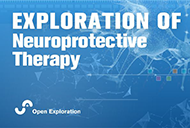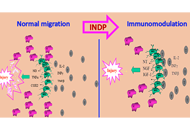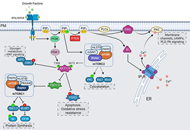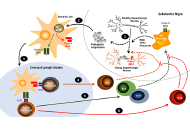Striking a balance: PIP2 and PIP3 signaling in neuronal health and disease
Phosphoinositides are membrane phospholipids involved in a variety of cellular processes like growth, development, metabolism, and transport. This review focuses on the maintenance of cellular homeo
[...] Read more.
Phosphoinositides are membrane phospholipids involved in a variety of cellular processes like growth, development, metabolism, and transport. This review focuses on the maintenance of cellular homeostasis of phosphatidylinositol 4,5-bisphosphate (PIP2), and phosphatidylinositol 3,4,5-trisphosphate (PIP3). The critical balance of these PIPs is crucial for regulation of neuronal form and function. The activity of PIP2 and PIP3 can be regulated through kinases, phosphatases, phospholipases and cholesterol microdomains. PIP2 and PIP3 carry out their functions either indirectly through their effectors activating integral signaling pathways, or through direct regulation of membrane channels, transporters, and cytoskeletal proteins. Any perturbations to the balance between PIP2 and PIP3 signaling result in neurodevelopmental and neurodegenerative disorders. This review will discuss the upstream modulators and downstream effectors of the PIP2 and PIP3 signaling, in the context of neuronal health and disease.
Kamran Tariq, Bryan W. Luikart
Phosphoinositides are membrane phospholipids involved in a variety of cellular processes like growth, development, metabolism, and transport. This review focuses on the maintenance of cellular homeostasis of phosphatidylinositol 4,5-bisphosphate (PIP2), and phosphatidylinositol 3,4,5-trisphosphate (PIP3). The critical balance of these PIPs is crucial for regulation of neuronal form and function. The activity of PIP2 and PIP3 can be regulated through kinases, phosphatases, phospholipases and cholesterol microdomains. PIP2 and PIP3 carry out their functions either indirectly through their effectors activating integral signaling pathways, or through direct regulation of membrane channels, transporters, and cytoskeletal proteins. Any perturbations to the balance between PIP2 and PIP3 signaling result in neurodevelopmental and neurodegenerative disorders. This review will discuss the upstream modulators and downstream effectors of the PIP2 and PIP3 signaling, in the context of neuronal health and disease.
 Maternal imprinting, mitochondrial DNA, nuclear DNA and Alzheimer’s diseaseOpen AccessPerspectiveFamilial early-onset Alzheimer’s disease (AD) is more probable in individuals coming from mothers diagnosed with AD than from fathers diagnosed with AD. Studies in animal models have show [...] Read more.Alberto Pérez-Mediavilla, Marta ZamarbidePublished: October 29, 2021 Explor Neuroprot Ther. 2021;1:121–126
Maternal imprinting, mitochondrial DNA, nuclear DNA and Alzheimer’s diseaseOpen AccessPerspectiveFamilial early-onset Alzheimer’s disease (AD) is more probable in individuals coming from mothers diagnosed with AD than from fathers diagnosed with AD. Studies in animal models have show [...] Read more.Alberto Pérez-Mediavilla, Marta ZamarbidePublished: October 29, 2021 Explor Neuroprot Ther. 2021;1:121–126 Immunization with neural-derived peptides as a neuroprotective therapy for spinal cord injuryOpen AccessReviewSpinal cord injury (SCI) induces several destructive events that develop immediately after the primary insult. These phenomena increase tissue damage; that is why, numerous therapeutic approaches ar [...] Read more.Andrea Paola Ibarra-García, Antonio IbarraPublished: October 29, 2021 Explor Neuroprot Ther. 2021;1:111–120
Immunization with neural-derived peptides as a neuroprotective therapy for spinal cord injuryOpen AccessReviewSpinal cord injury (SCI) induces several destructive events that develop immediately after the primary insult. These phenomena increase tissue damage; that is why, numerous therapeutic approaches ar [...] Read more.Andrea Paola Ibarra-García, Antonio IbarraPublished: October 29, 2021 Explor Neuroprot Ther. 2021;1:111–120 Striking a balance: PIP2 and PIP3 signaling in neuronal health and diseaseOpen AccessReviewPhosphoinositides are membrane phospholipids involved in a variety of cellular processes like growth, development, metabolism, and transport. This review focuses on the maintenance of cellular homeo [...] Read more.Kamran Tariq, Bryan W. LuikartPublished: October 29, 2021 Explor Neuroprot Ther. 2021;1:86–110
Striking a balance: PIP2 and PIP3 signaling in neuronal health and diseaseOpen AccessReviewPhosphoinositides are membrane phospholipids involved in a variety of cellular processes like growth, development, metabolism, and transport. This review focuses on the maintenance of cellular homeo [...] Read more.Kamran Tariq, Bryan W. LuikartPublished: October 29, 2021 Explor Neuroprot Ther. 2021;1:86–110 T-cell based immunotherapies for Parkinson’s diseaseOpen AccessReviewCurrent evidence indicates that neurodegeneration of dopaminergic neurons of the substantia nigra associated to Parkinson's disease is a consequence of a neuroinflammatory process in whic [...] Read more.Rodrigo PachecoPublished: October 29, 2021 Explor Neuroprot Ther. 2021;1:72–85
T-cell based immunotherapies for Parkinson’s diseaseOpen AccessReviewCurrent evidence indicates that neurodegeneration of dopaminergic neurons of the substantia nigra associated to Parkinson's disease is a consequence of a neuroinflammatory process in whic [...] Read more.Rodrigo PachecoPublished: October 29, 2021 Explor Neuroprot Ther. 2021;1:72–85